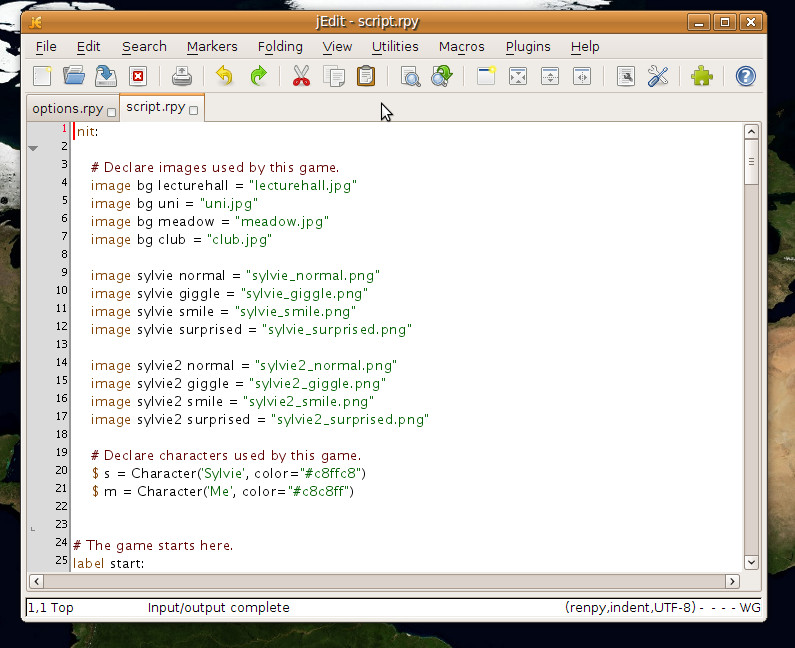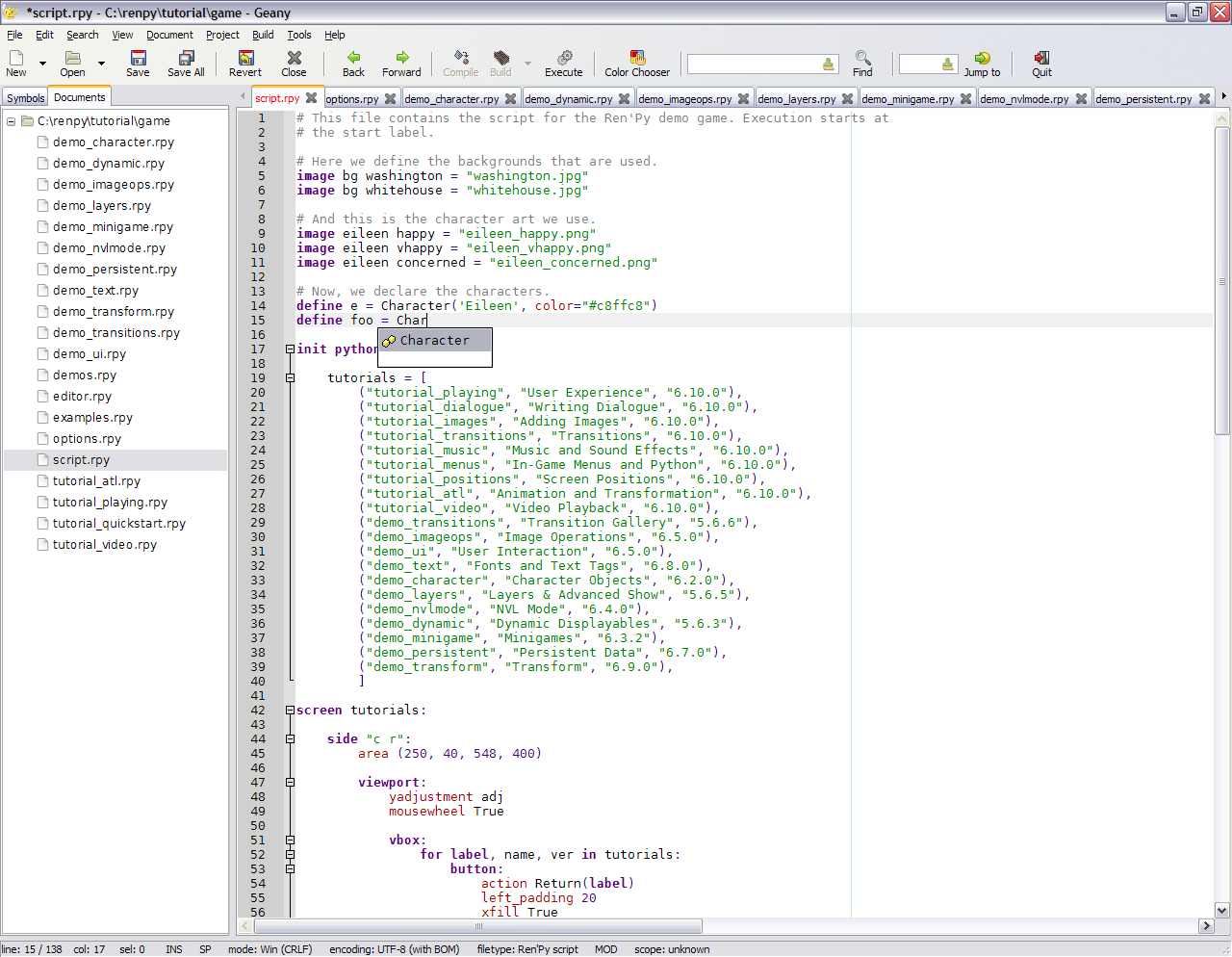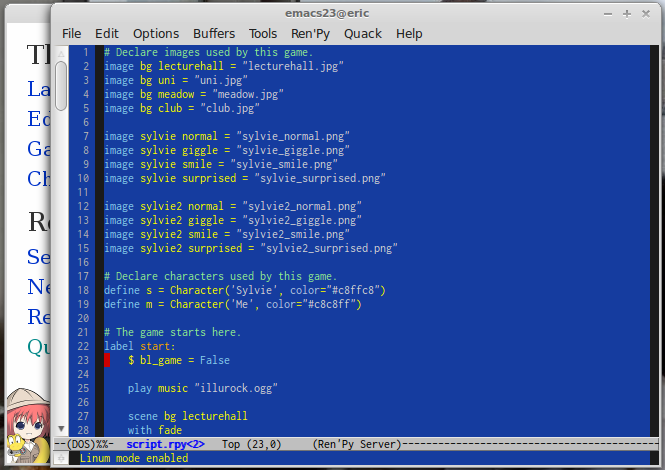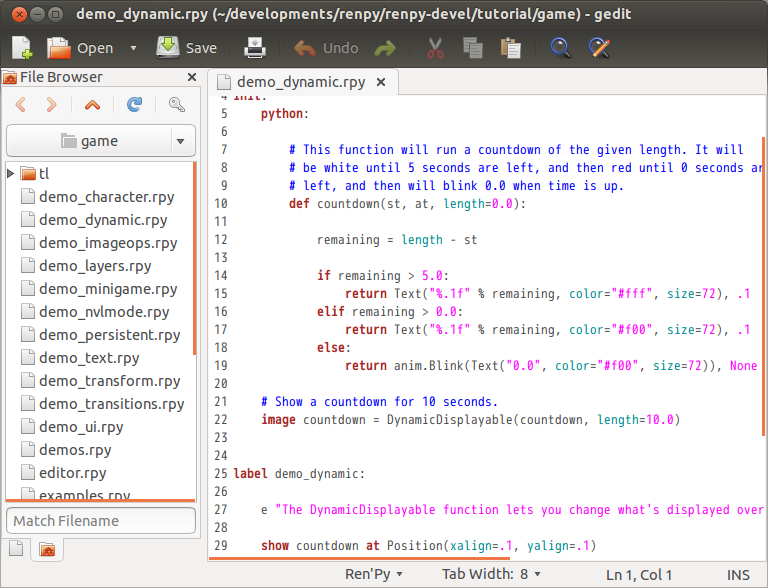This page is out of date
You've reached a page on the Ren'Py wiki. Due to massive spam, the wiki hasn't been updated in over 5 years, and much of the information here is very out of date. We've kept it because some of it is of historic interest, but all the information relevant to modern versions of Ren'Py has been moved elsewhere.
Some places to look are:
- The Ren'Py Home Page
- Download the Latest Version
- Ren'Py Documentation
- Quickstart Tutorial
- Ren'Py Cookbook
Please do not create new links to this page.
Editors
The new launcher introduced with Ren'Py 6.9.3 contains pluggable text editor support. This page contains information about the text editors for which we've created this support, along with downloads that help install and configure those editors.
To use this support, please download the appropriate file and unzip it into the directory containing Ren'Py.
jEdit

This Java-based editor runs on Windows, Mac OS X, and Linux.
- Last updated for Ren'Py 6.9.3
- Included with the Ren'Py distribution.
SciTE

This small and fast text editor runs on Windows and Linux.
- Last updated for Ren'Py 6.13.9
- Media:Scite6.13.9.zip
Geany

This GTK+ editor runs on Linux and Windows.
Emacs

Emacs can be used as an editor for renpy by running it as a server and using the
emacsclientcommand in the emacs.edit.py file.
To start the Emacs server, you can either invoke
M-x (server-start)inside your current Emacs session or put
...
(server-start)
...somewhere in your configuration script.
This is the emacs.edit.py file:
import renpy
import subprocess
class Editor(renpy.editor.Editor):
def begin(self, new_window=False, **kwargs):
self.arguments = ["emacsclient"]
if new_window:
self.arguments.append('-c')
def open(self, filename, line=None, **kwargs):
if line:
self.arguments.append("+%d" % line)
filename = renpy.exports.fsencode(filename)
self.arguments.append(filename)
def end(self, **kwargs):
print self.arguments
subprocess.Popen(self.arguments)There is a renpy mode for emacs available here:
Copy into your Emacs load-path and add the line
(require 'Renpy)to your configuration script.
gedit (GtkSourceView)

For editors based on GtkSourceView, this language file highlights rpy scripts.